We talked about planning an inclusive programme , now how could we make the communications about and at the programme inclusive?
Always say on your publicity materials that the event is an inclusive one, or if it is specifically tailored for a particular community. So people know that this is for them.
We can also say what will be provided to increase accessibility. Such as whether or not you will be providing a sign language interpreter or there will be a closed caption screen.
These are some media that can be used to promote your event or to publicise your open call. Here we share our experience what we have done for our Gerakan Kreabilitas participation open call.:
Online Media
- Social Media promotion using video. This is helpful for those who struggle to read. We also provided a space for Question and answer session.
- We contacted many relevant communities and organisations directly on Instagram. To encourage them to participate and ask them to help spread the message.
- We also messaged and provided a poster/image a few media channels to ask them to share the news
Direct Message
- We sent printed application forms and information posters to a few organisations across Indonesia that have not got social media or any online pressence. To ensure that the organisation exist we try to find out by finding their phone number and calling them
- We also visited some organisations in Bali that service disabled people.
- We arranged meetings with key disabled campaigners and those who are involved in working with disabled people.
Messaging
Beside the media, we need to pay attention to the message and how it is written, to avoid any misunderstanding. Ensure that the sentences you use are
- Descriptive
- Easily understandable
- Simple
- Sensitive
- Polite and respectful
Ways to present your messages
- Use sentences that are short with simple language but still interesting
- Use easy-read method with simple design , ensure the text are not to cramped
- Use 12 font size or more (ideally for print format it is 14ptt). People with partial sight commonly are comfortable with 18pt size. But if you are unsure, ask them.
- Avoid italicising, handwritten style font, and using all capital letters in long sentences.
- Use high contrast between the backgr0und and the writing
- Avoid putting text on top of an image.
- When printing, avoid thin paper, as the text on the next page could be seen and distract.
- Avoid using glossy paper
- If you have a fold, be careful that it is not obscuring the writing
- PDF file can sometime not be read by screen readers. If you have a website it is better for the pages to be written on the page directly, if not provide a word document version of the file.
- On websites when you upload a photo or an image ensure that they are correctly titled, label and provide ALT ( alternative) description. This is where you describe what the image is portraying.
- The use of visual texture or images like infographic can help with reading the information.
- If you have signs or icons, it is good to add text to describe what they are, don’t just use different colours.
We found this guide by the UK government, that you may find useful.
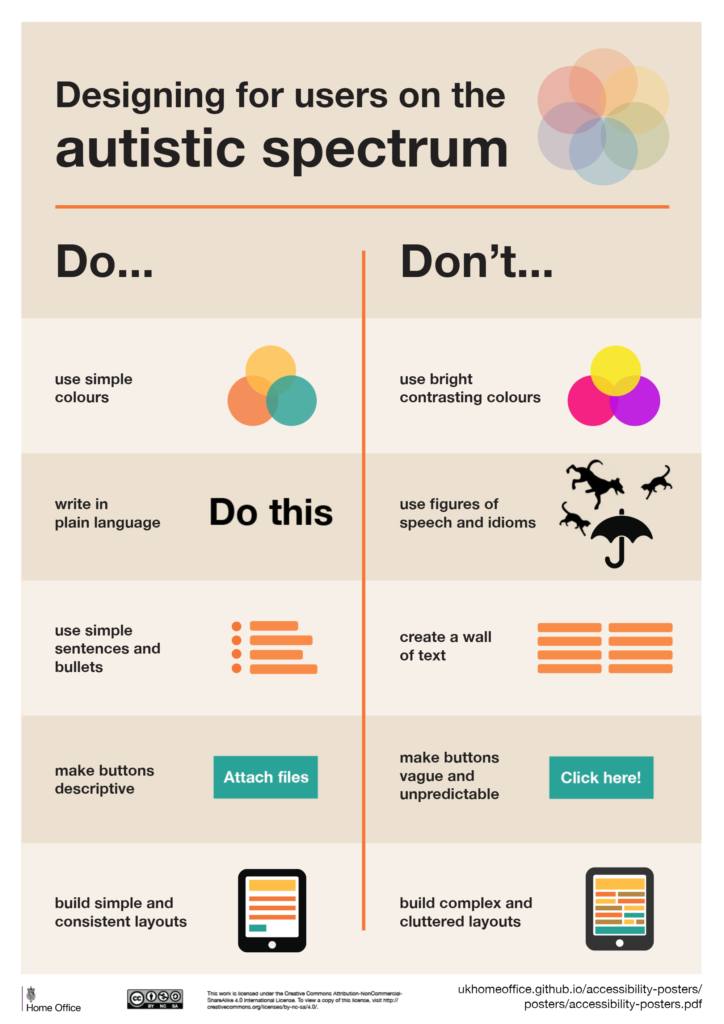
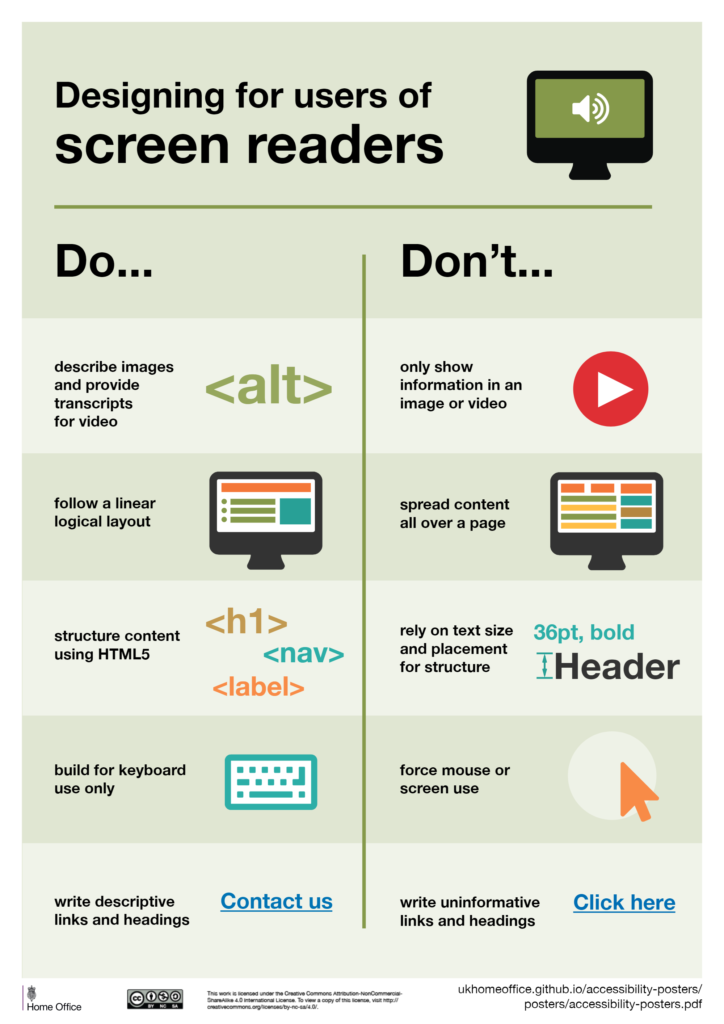
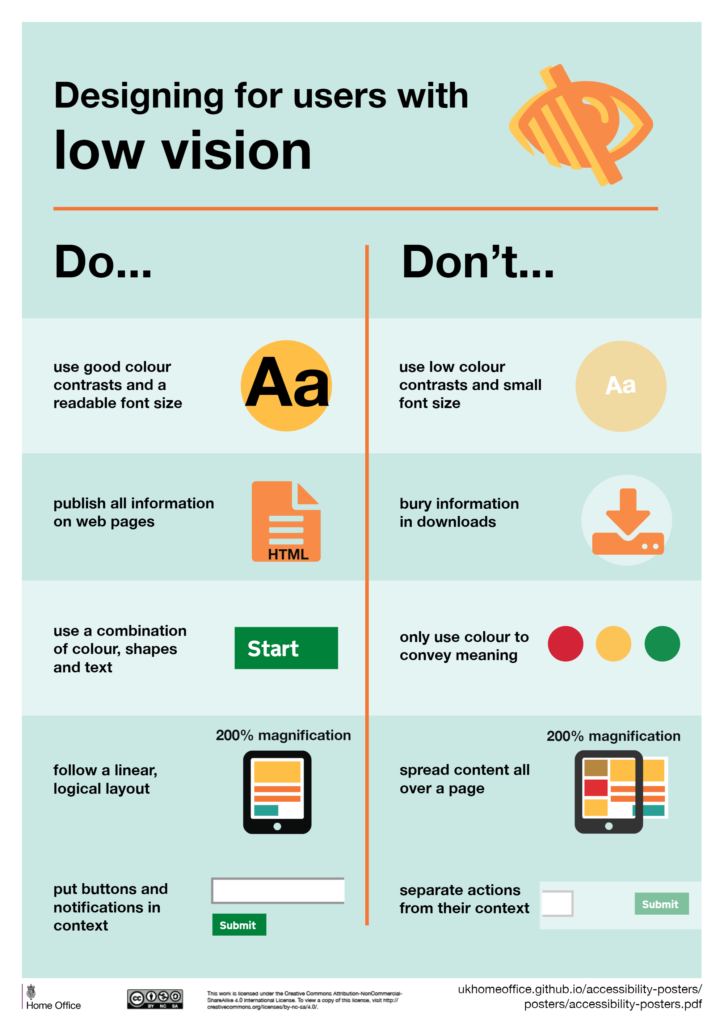
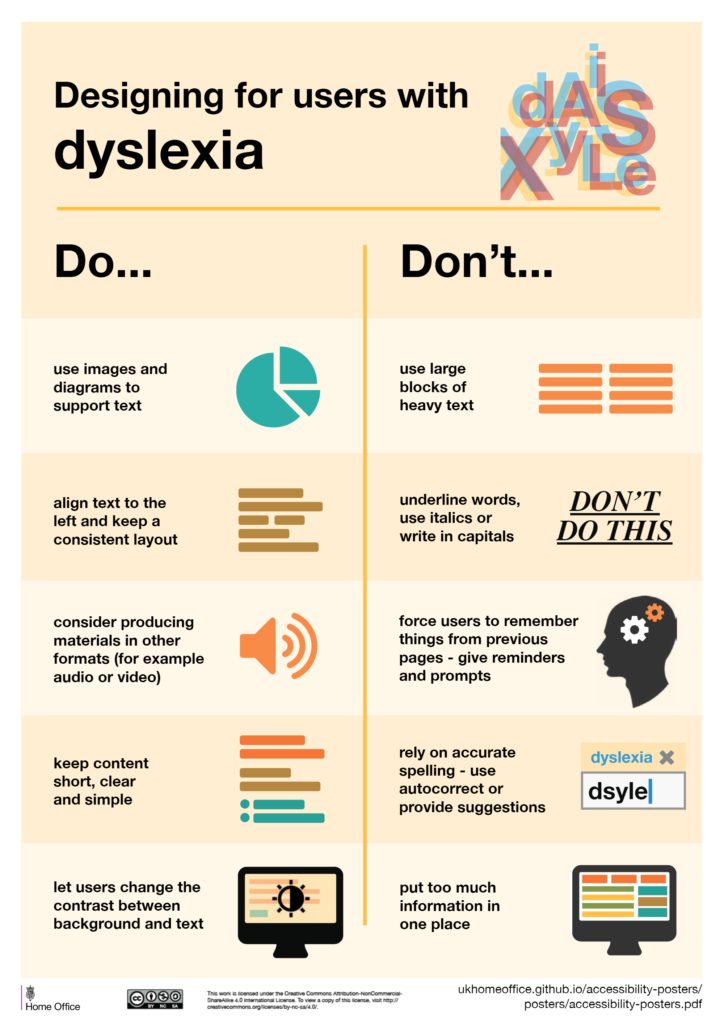
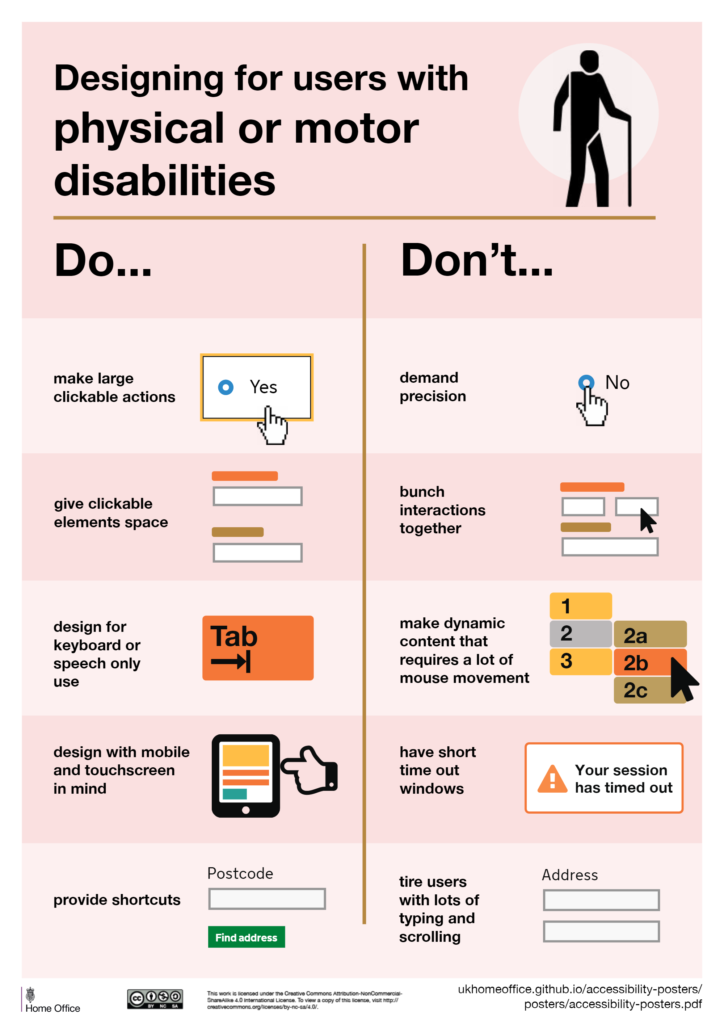
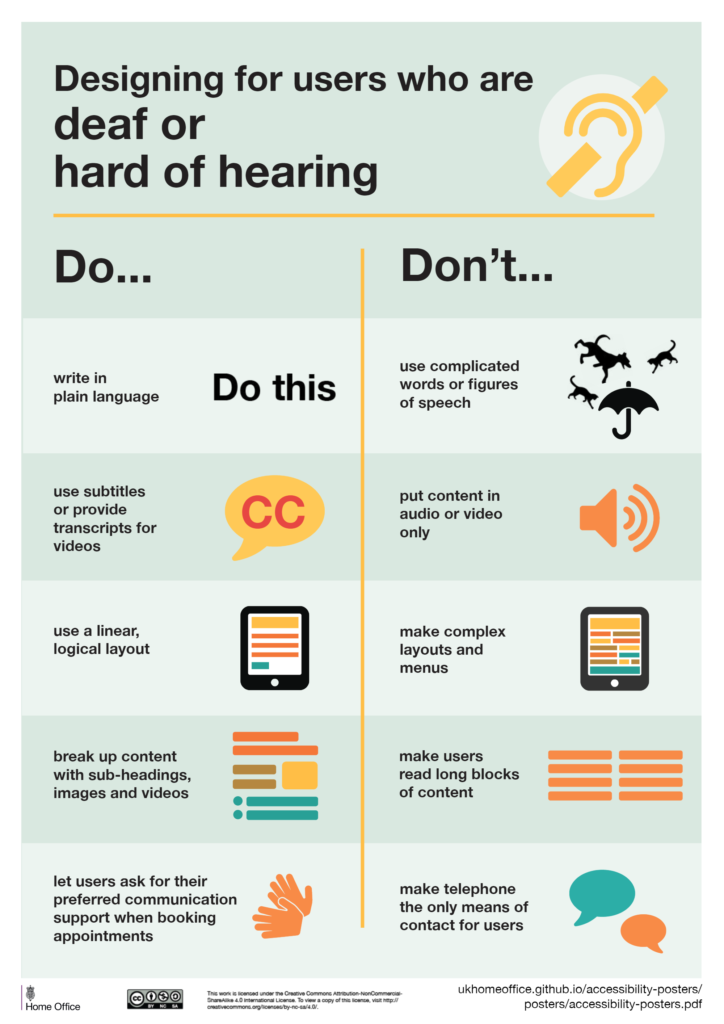
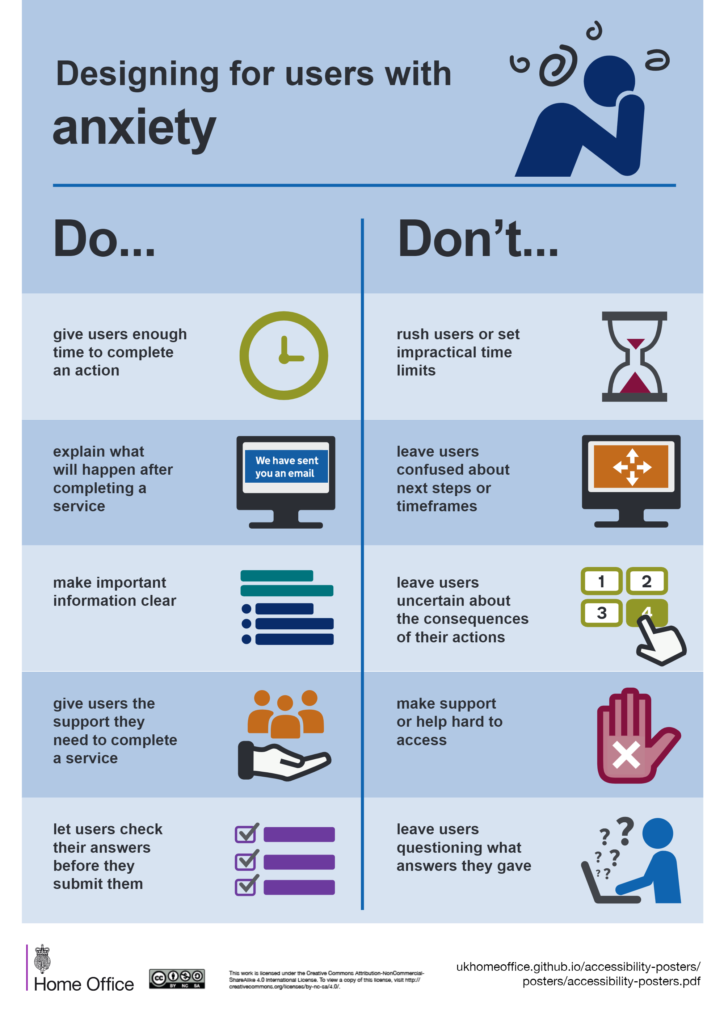
There are different accessibility needs in communication. By providing inclusive and accessible communication media or platform, we open opportunities for wider audiences to be able to receive our message.
In the next article we will talk about how to make an inclusive working environment, providing space that does not create any barrier to all its users.
This article was written originally in Indonesian as a part of Inklusivitas Kolaborasi seni dan Kreatif, a result of our Project Gerakan Kreabilitas, which is a project funded by British Council’s Developing Inclusive Creative Economy (DICE).
The complete toolkit in Indonesian is available to be downloaded here.
References:
“Ensuring your venues and events are open to all”.Shape Access Guide.accessed 9 Desember 2019
“Accessible communication formats”. accessed 22 Februari 2020
“Designing For Color-Blind Viewers”.A Better Image Printing.accessed 10 Desember 2019

